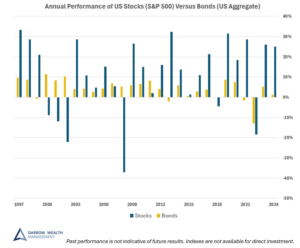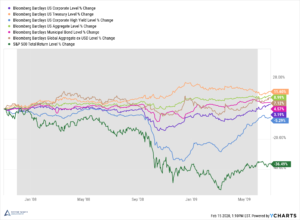Whether you’re managing your own investments or working with a financial advisor, setting the right asset allocation is key. But what’s the best way to apply an asset allocation to multiple investment accounts? Managing your accounts at the portfolio level vs each account individually is advantageous in many situations. A portfolio-level asset allocation can offer asset location optimization, potentially save on investment costs, and provide flexibility when managing retirement plans.
Using a portfolio-based approach to apply an asset allocation to multiple investment accounts
Looking at each investment account in a vacuum isn’t always the most efficient way to manage money. Rather than manage each account individually, a portfolio-based approach focuses on achieving the asset allocation across multiple accounts in aggregate.
Benefits of a portfolio-level asset allocation
- Asset location strategies can help reduce tax by taking advantage of the tax treatment in different types of accounts, such as tax-deferred retirement accounts vs taxable accounts
- Flexibility to skip high-cost or sub-par 401(k) fund options without jeopardizing the overall investment strategy
- Placing fewer, but larger trades, can help reduce transaction costs across all accounts
For example, when you have limited 401(k) investment options, you can focus on choosing only the best funds then completing your asset allocation by filling in the asset class gaps with your other accounts. The goal is a cohesive, unified strategy, that is tax and cost efficient, without sacrificing the overall asset allocation.
Darrow Wealth Management is an asset management and financial planning firm based in Greater Boston. Although we are based in Massachusetts, we partner with executives and professionals across the United States. As a registered investment advisor, we are a financial fiduciary. Learn more about our approach to holistic wealth management.










